Table of contents
Semolina ( semoule ) is a grainy mill product that is created by grinding various types of grain. Durum wheat, soft wheat or corn are the most commonly used grains to make semolina. Semolina consists of starch grains that are held together by protein. Semolina ( raw ) is available in good organic quality ( organic ) in selected shops.
Use of semolina in the kitchen:
Semolina (not semolina) as a collective term for crushed grains refers to their degree of grinding. Semolina has a mild taste and a slightly earthy, nutty note. Depending on which grain the semolina is made from, it can have a whitish, yellow or yellowish-brown color. The most common semolina is made from hard wheat (durum wheat) and soft wheat. But semolina made from corn (for polenta) and semolina made from other grains such as barley , spelt , millet , oats , rye or the pseudo-grain buckwheat can also be used in the kitchen. 1
Can you eat semolina raw? Although raw semolina is not poisonous, it is harder to digest than cooked semolina. It is therefore advisable to cook raw semolina before eating it.
Which semolina for what? Depending on the type, the properties of semolina vary when processing and preparing it; for example, only certain types of semolina are used for certain dishes.
Durum wheat semolina is mainly used for hearty meals and for making pasta. Most pasta doughs are made from durum wheat semolina because the high gluten content in semolina ensures that the pasta keeps its shape when cooked and does not fall apart in water. You can also make couscous , semolina dumplings, pudding and much more from durum wheat semolina. 2
Soft wheat semolina cooks very easily and has a creamy consistency. Soft wheat semolina is often used instead of durum wheat semolina for desserts and fried dishes, but also for baby food, soups and puddings. 2
Also widely used is corn semolina , which is made from raw, dried corn in various degrees of fineness. Fine corn semolina is used in polenta: a smooth porridge, served creamy or solid. The polenta variant made from coarse corn semolina is also known as bramata. Polenta was long considered "poor man's food". Nowadays it is available in restaurants, as a side dish to hearty dishes, but also with tofu and vegetables (e.g. mushrooms in tomato sauce). Medium-fine corn semolina is used to make sweet puddings or flatbreads, and the coarsest semolina (corn groats) is used to make corn flakes.
When making semolina, a by-product called 'Dunst' is produced, which is also known as dunst flour or fine semolina. 'Dunst' is coarser than conventional flour and is ideal for making strudel and spaetzle. Semolina can also be used to thicken and bind dishes.
Vegan recipes for traditional and exotic semolina porridge:
First of all, the question: Do you use durum wheat or soft wheat for semolina porridge? For semolina porridge, it is better to use soft wheat. It cooks much faster than durum wheat. The finished porridge therefore has a creamier consistency.
A well-known dish that brings back childhood memories for many people is the dessert semolina porridge, here vegan.
Ingredients (for 2 persons): 60 g soft wheat semolina, 500 ml plant-based milk/plant-based drink ( oat milk , soy milk ), 1 pinch of salt , 3 tablespoons of sugar , a pinch of bourbon vanilla (orvanilla powder ).
Preparation: First, heat the plant-based milk with a pinch of salt, sugar and vanilla in a saucepan until the milk begins to boil. Then remove the pan from the heat, slowly stir the semolina into the milk with a whisk (frother, whisk) and bring to the boil again briefly on the stove. After the semolina porridge has had time to swell for 5 minutes away from the stove, it can be served.
Another exotic interpretation of traditional semolina porridge is vegan turmeric semolina.
Ingredients (for 2 people): 1 cup spelt semolina, ½ teaspoon turmeric (ground), 1 pinch ginger powder , 1 pinch cardamom , ¼ teaspoon cinnamon , 1 tablespoon cane sugar, 1 pinch sea salt , 2 cups almond milk , 4 dried apricots , 4 tablespoons pomegranate seeds .
Preparation: For the turmeric semolina, mix the turmeric, ginger powder, cardamom, cinnamon, cane sugar and salt with the spelt semolina. After bringing two cups of almond milk to the boil in a saucepan, slowly add the semolina and stir in with a whisk. Remove the semolina from the heat and add the chopped apricots. Allow the whole thing to cool slightly, sprinkle pomegranate seeds on top and serve sprinkled with a little cinnamon.
Vegan recipe for corn semolina as a side dish:
Ingredients (for 4 people): 250 g corn semolina, 1 l water , 1 teaspoon salt.
Preparation: Bring 1 litre of water to the boil, add salt and stir in the corn semolina. After the polenta has simmered for 10 minutes, remove the pan from the heat and leave to simmer for 15 minutes. Serve the finished porridge or spread it on a board in the traditional way and cut into slices after it has cooled. Depending on your taste, you can also refine this recipe with herbs or a little bouillon instead of salt.
Vegan recipes with semolina can be found under the note: " Recipes that have the most of this ingredient ".
| Not only vegans or vegetarians should read this: Vegans often eat unhealthily. Avoidable nutritional errors . |
Shopping - where to buy semolina?
Supermarkets and wholesalers such as Coop, Migros, Denner, Volg, Spar, Aldi, Lidl, Rewe, Edeka, Hofer etc. have raw semolina made from durum wheat, soft wheat and corn in their range. Semolina made from buckwheat, barley, spelt and oats as well as semolina, raw and organic, can be found in health food stores, organic shops, organic supermarkets (such as Denn's Biomarkt, Alnatura ), drugstores, specialty stores or online.
There are three different classes of semolina, which refer to the fineness of the grains. There is coarse, medium and fine semolina. Almost exclusively fine semolina is sold. Its grains have a diameter of 0.3 to 0.5 mm. Medium semolina has a size of 0.5 mm to 0.6 mm and coarse semolina is 0.6 mm to 1 mm. For comparison: 'Dunst' (fine semolina) has a grain size of between 0.15 and 0.3 mm and flour is finer than 0.15 mm. 3
Difference to Bulgur : Bulgur is not semolina; it is also made from durum wheat grains, but these are only roughly chopped into groats or meal (>1mm).
Storage:
In conventional semolina production, the shell and germ are separated before grinding, which gives the semolina a longer shelf life.
After purchase, semolina should be stored in an insulated, dry and cool place, as it is susceptible to foreign odors and to the formation of lumps due to moisture. 4 Storage near odorous ingredients such as coffee, tea and spices should be avoided.
Store fresh foods made from semolina (such as semolina porridge) in the refrigerator and use them within 1-2 days. Dried foods made from semolina (such as pasta and couscous) can be kept uncooked for several years. Cooked pasta and cooked couscous should be used within a few days.
Ingredients - nutritional value - calories:
Semolina has 360 kilocalories per 100 g. These come mainly from carbohydrates, which make up a large part at 73 g/100g. With 13 g of protein per 100 g, semolina covers around 25% of the daily requirement and contains more protein than, for example, wheat (10 g) and corn (9.4 g). Fat is present at 1%. 5
The protein contained is valuable because it is made up of essential amino acids. 100 g of semolina contains 0.16 g of tryptophan . This covers 65% of the daily requirement. The amount can be compared with the amount in quinoa , barley groats or wholemeal spelt flour . Soybeans (0.6 mg/100g) and yellow mustard seeds (0.5 mg/100g) contain much more. Tryptophan is involved in the formation of several proteins and acts as a precursor for the neurotransmitter serotonin and the vitamin niacin . Other amino acids such as isoleucine , phenylalanine , leucine , threonine and valine are also present in good quantities. 5 Strictly speaking, threonine and lysine are the only two truly essential amino acids because they are irreversibly transaminated (see okara ).
Eating 100 g of semolina can cover 36% of the daily requirement of folate (folic acid). The proportion of 72 µg/100g is comparable to wheat bran (79 µg/100g). Kidney beans (394 µg/100g) and chickpeas (557 µg/100g) have a particularly high folate (folic acid) content. 5 Since folate is one of the heat-sensitive vitamins and suffers significant losses even with slight heating, the actual proportion of folate (folic acid) after preparation is lower than in the raw state. Folic acid is important for cell renewal and cell growth. Pregnant women or women who are trying to become pregnant should especially ensure they have an adequate supply (550 µg daily is recommended by the DGE 6 and the BfR), as the vitamin plays a crucial role in the development of the fetus. 7
The daily requirement of thiamine (vitamin B 1 ) is covered by 25% with 0.28 mg per 100 g of semolina (raw).Dried pumpkin seeds and lupine flour achieve comparable values. Linseed (1.6 mg/100g) and sunflower seeds (1.5 mg/100g) contain a lot of the vitamin. 5
The amount of manganese (62 mg) in 100 g of semolina is about 31% of the daily requirement. Panko breadcrumbs and regular breadcrumbs have similar values. Significantly more manganese can be found in the spices cardamom (28 mg/100g) and cloves (60.1 mg/100g), but spices should only be consumed in moderation. 5 The human body needs manganese for its carbohydrate metabolism, its urinary cycle and for the formation of cartilage tissue, among other things. 8
You can find all the ingredients of semolina, the coverage of the daily requirement and comparison values with other ingredients in our nutrient tables. In the article Nutrients explained you will get a detailed insight into the topic.
Health aspects - effects:
Is semolina healthy? Semolina can be made from various types of grain, so its nutritional significance depends on the grain in question. The following paragraphs describe the most common types of semolina and their health effects.
Wheat semolina: Semolina made from wheat has a high protein and fiber content and a low fat content. The fiber makes the semolina very filling. At the same time, it helps with digestion and can lower blood fat levels and help with the excretion of cholesterol. One study highlights the comparatively low glycemic index of durum wheat semolina, which causes blood sugar levels to rise more slowly than parboiled and long-grain white rice and is therefore suitable for diabetics in moderate quantities. 9 Please note: You can also find "whole grain semolina" (semolina with some husk), which has a GI of 50. "Normal" semolina has a glycemic index of 65. Both values are in the middle of the GI scheme, which is between 50 and 70, which is why the term "low" is not entirely correct here. 10
Corn semolina: Corn semolina is also a low-fat side dish. It contains a lot of complex carbohydrates and fiber and therefore keeps you full for a long time. Since the semolina is digested slowly, blood sugar levels also rise slowly. Corn semolina contains important amino acids such as leucine, which helps build muscle mass, and threonine, which is needed for the growth, development and maintenance of collagen and mucous membranes. Corn semolina also contains the vitamin thiamine (vitamin B 1 ), which is important for the metabolism and nervous system. The phosphorus content of corn semolina is important for energy production in the human organism.
Since corn does not contain gluten, corn semolina is also suitable for people with celiac disease or gluten sensitivity. 11 In addition, corn semolina (corn flour, polenta) enriched with flavonoids can help restore the intestinal mucosa in cases of chronic colon inflammation. 12
Dangers - Intolerances - Side effects:
Durum wheat semolina and soft wheat semolina in particular contain a lot of gluten and are therefore dangerous for people with celiac disease and gluten sensitivity. 13
But: What is celiac disease? This is a disease in which those affected suffer from an intolerance to the grain protein gluten. The disease has been known for many decades. However, until the trigger was found and the gluten-free diet was introduced, around 60% of all patients died. Celiac disease can occur in both childhood and adulthood. 20% of patients first diagnosed are over 60 years old. The disease is defined as a food intolerance that triggers an autoimmune reaction in genetically predisposed patients. 14 Any products made from flour, semolina, groats or barley from grains containing gluten are harmful to those affected. Gluten is often hidden in products as an additive. Even medication can contain gluten. Gluten-free grains or pseudo-grains include rice, wild rice, corn, millet, buckwheat, amaranth and quinoa. 14
People with a wheat allergy or sensitivity should also avoid eating durum wheat semolina and soft wheat semolina. 15 Wheat allergies occur in all age groups, but are very rare. The consumption of wheat triggers an immune reaction. Antibodies are formed that fight the protein contained in the wheat. The symptoms are very varied and can include abdominal pain, flatulence, diarrhea, nausea, tiredness and skin reactions such as itching and rashes. 16
Folk medicine - natural medicine:
Semolina is very easily digestible due to its small grains and is used as a light diet for gastrointestinal diseases. However, fine semolina is significantly less nutritious than semolina that still contains husks and germs, which also applies to corn semolina (polenta). 17
Occurrence - Origin:
The types of grain used to make raw semolina have different origins. This section deals with wheat and corn as the most common and most commonly used types of semolina.
Wheat: Wheat originated in Ethiopia and is now grown worldwide in temperate and subtropical climates. The most important growing countries are China, India, the USA, France and Russia. Wheat is the second oldest type of grain after barley, as it is believed that people first cultivated wheat in its original wild form around 8,000-10,000 years ago. Soft wheat ( Triticum aestivum ) accounts for 90% of the world harvest. It can be grown almost anywhere, unlike durum wheat ( Triticum durum ), which accounts for only 10% of the world harvest and is grown in areas with short, hot summers such as Russia and Canada. 4 Durum wheat cultivation, organic and conventional, amounted to just 15,300 hectares in 2011. Organic durum wheat cultivation is not so easy due to the high level of weed competition and susceptibility to fungi. 18
Corn: Corn ( Zea mays ) originally comes from Central America and came to Europe in the 16th century. Today it is grown in many hot and temperate regions. Corn is one of the most important types of grain and is the cereal plant with the highest yield potential. 4 However, corn is a root crop in plant cultivation (similar to sugar beet or potatoes). Cultivation on organic land is increasing, but organic grain corn, with 11,000 hectares (2015), is not yet one of the crops with large areas of cultivation. 19
Industrial semolina production:
Is semolina flour? The production of semolina is similar to the conventional flour production process, but semolina is significantly coarser than ground flour.
How is semolina made? The most common method is conventional semolina production. First, the grain is carefully cleaned to remove damaged grains and the coarsest impurities. This step is done by hand. Then special scrubbing machines remove the last stubborn dirt. Before grinding, the grain is peeled and freed from its shell and germ. Then large steel rollers grind the grain. Compared to normal flour production, the rollers here are set much coarser and a grainy product is obtained. The grain is milled in several passes. After each pass, the semolina is sieved and the fine dust and flour particles are separated. The rollers are set tighter after each pass so that increasingly finer grains are obtained. 20
It is also possible to add parts of the shells and germs back into the finished product. The semolina is therefore considered to be healthier and of higher quality than conventional semolina, as it contains significantly more minerals, vitamins and fiber. It is also called enriched semolina. Enriched semolina primarily contains more B vitamins (including folate) and iron 5 - depending on the product, other substances may also be enriched. However, it is never referred to as a whole grain product, as the flour part is always separated - and the semolina therefore never contains all the ingredients of whole grains. 21
The semolina can be processed into semolina flour in further grinding steps.
General information:
According to Wikipedia , the term semolina comes from the Latin word "simila" = flour and the Italian word "semola" = bran. In order for the grains to be called semolina, the grain size must be uniform and the flour content must be less than one percent.
By crushing the grains, the gluten contained in the semolina can develop very well and binds liquid after a short boil. This makes semolina a wonderful binding agent in the kitchen.
Alternative names:
In English, semolina is called semolina, durum wheat semolina, durum wheat flour or occasionally hard wheat semolina. Soft wheat semolina is called soft wheat semolina. Corn semolina is called cornmeal, corn semolina, maize semolina or polenta.
Outside Switzerland, the following spellings are common in German-speaking countries: Grieß, Weizengrieß or Maisgrieß (e.g. eating Grieß raw, making Grieß). The incorrect spelling Gries is quite common.
Literature - Sources:

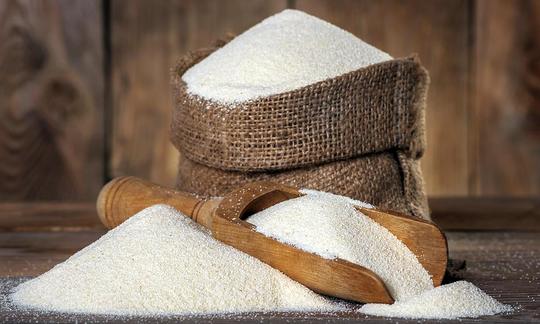

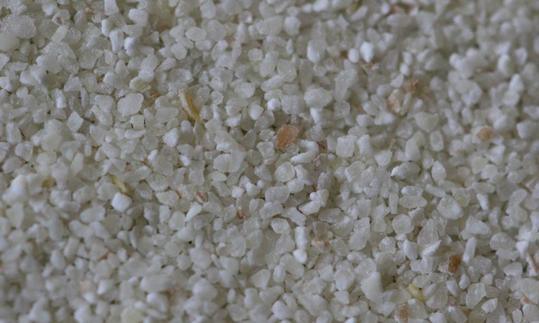

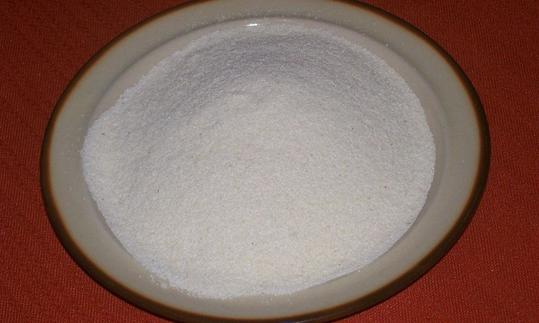

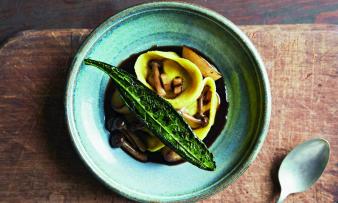
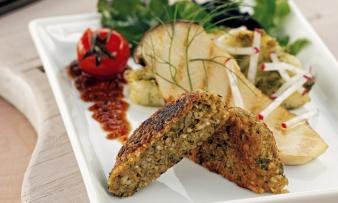

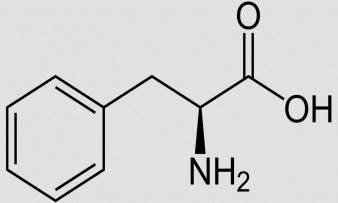
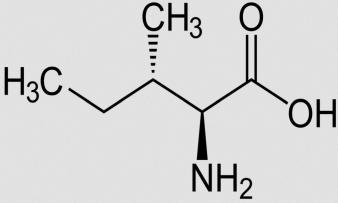


Comments